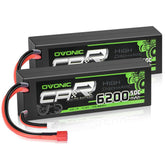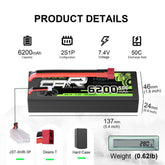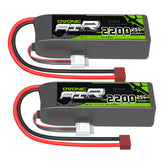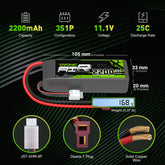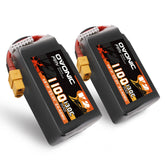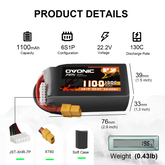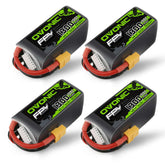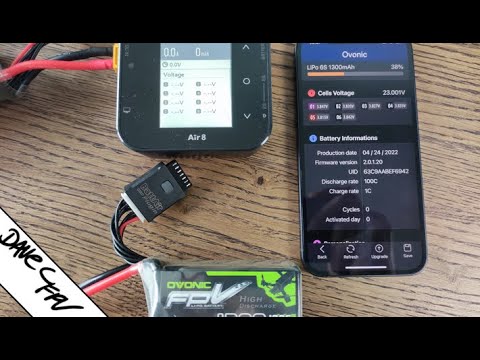Trending Now
Popular Products
- €33,58
- €33,58
- Unit price
- / per
- €29,50
- €29,50
- Unit price
- / per
- €30,60
- €30,60
- Unit price
- / per
- From €26,51
- From €26,51
- Unit price
- / per
Trending Now
Popular Products
- €33,58
- €33,58
- Unit price
- / per
- €29,50
- €29,50
- Unit price
- / per
- €30,60
- €30,60
- Unit price
- / per
- From €26,51
- From €26,51
- Unit price
- / per
Ovonic Battery Safety Information
LiPo Battery Overview
Battery Selection Guide
1. What is a "LiPo" battery?
Lithium Polymer batteries (LiPo) are modern batteries used in many consumer electronics, popular for long run times and high power in the radio control industry.
2. Understanding battery parameters (e.g., 1550mAh 4S1P 50C 14.8V):
- Capacity (1550mAh): Indicates how much power the battery can hold (1000mAh = 1Ah).
- Cell count (4S): Means there are 4 cells in series. A 4S pack has a voltage of 14.8V.
- Parallel connection (P): Multiple batteries connected to increase capacity (e.g., 2P = two batteries).
- Discharge rate/C Rating (50C): Indicates how quickly the battery can discharge safely.
3. Calculating maximum continuous current output:
Max continuous Amp draw (A) = Battery capacity (Ah) x Discharge rate (C).
Example: A 5100mAh (5.1Ah) 3-cell LiPo battery with a 10C rating can output 51A.
4. Determining necessary capacity:
Aim for the highest capacity battery while keeping the total weight of your quadcopter (including the battery) at 50-70% of maximum motor thrust.
5. Choosing the right plug:
| Connector Type | Ampacity | Wire Gauge |
|---|---|---|
| XT30 | 30A | 16-18AWG |
| XT60 | 60A | 12-14AWG |
| XT90 | 90A | 10-12AWG |
| EC3 | 60A | 12-14AWG |
| Deans | 60A | 12-14AWG |
Battery Usage Guide
1. Using a new lithium battery: Discharge with a small current (1-2A) initially, then charge and discharge at 0-1A for 2-3 cycles.
2. Storing when not in use: Store in a cool, dry place (15-35℃, 65% humidity). Best voltage for storage is 3.70-3.90V.
3. Best storage voltage: New batteries usually leave the factory at 30-60% charge, with a voltage of 3.70-3.90V.
4. Normal internal resistance: Generally around 10-20mΩ for a 2200mAh battery. Above 30mΩ is considered abnormal.
5. Charging with a small current: Recommended current for charging varies with battery capacity:
- Below 1000mAh: 0.5-0.8A
- 1000-2000mAh: 1A
- Above 2000mAh: 1-2A
Battery Disposal
How to dispose of a damaged battery:
- Check for swelling, damage, or leaking.
- Voltage should be ≥ 4.25V (non-high voltage) or < 3.0V.
- If capacity is below 70% of nominal, it may need disposal.
If disposal is necessary, soak the battery in salt water (1:20 ratio) for 24 hours in a safe outdoor container.
© 2024 OVONIC. All rights reserved.
- Choosing a selection results in a full page refresh.
